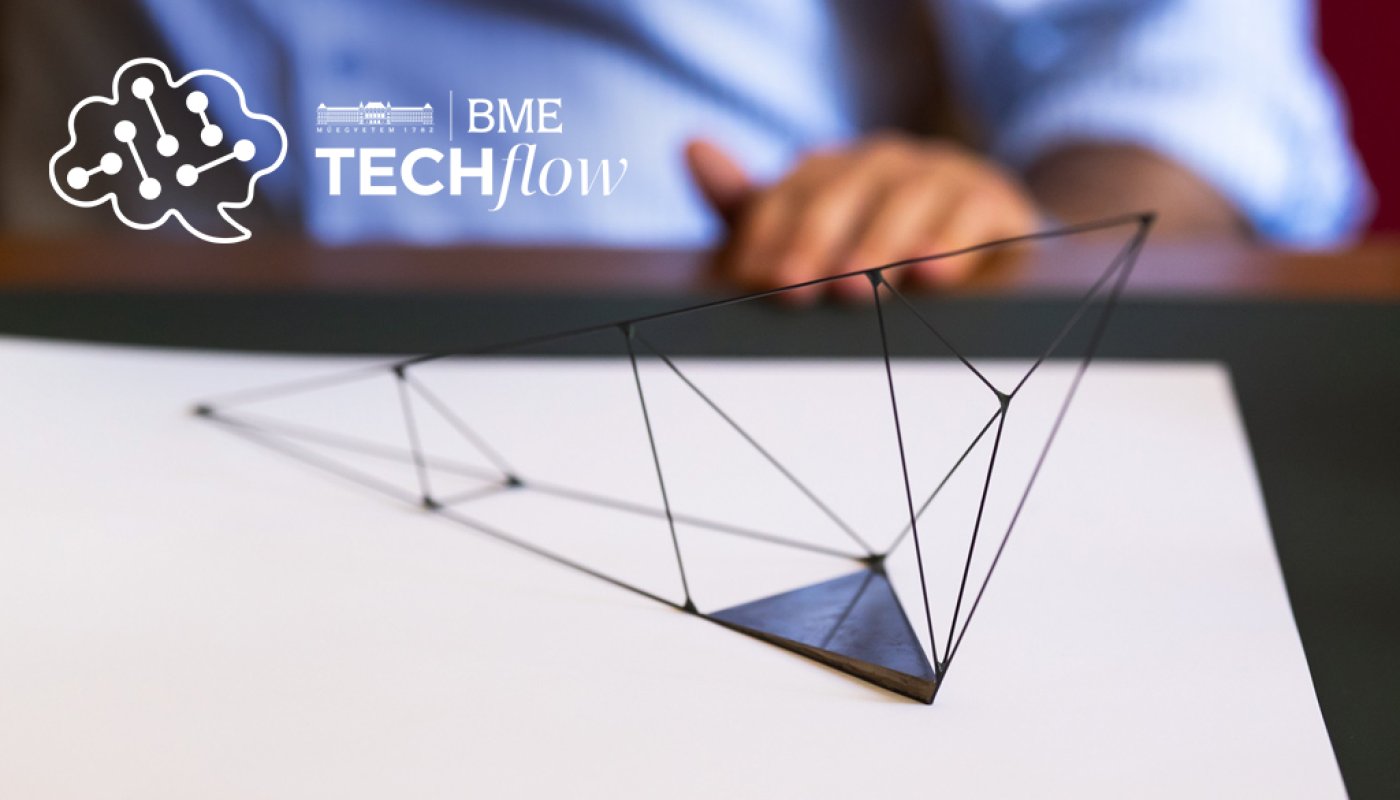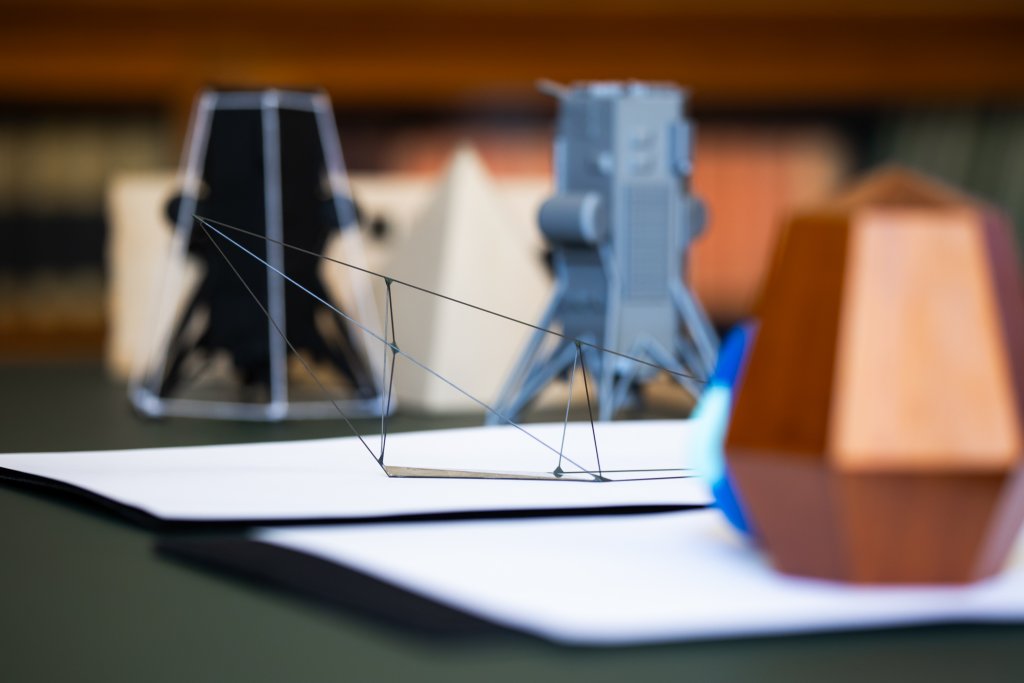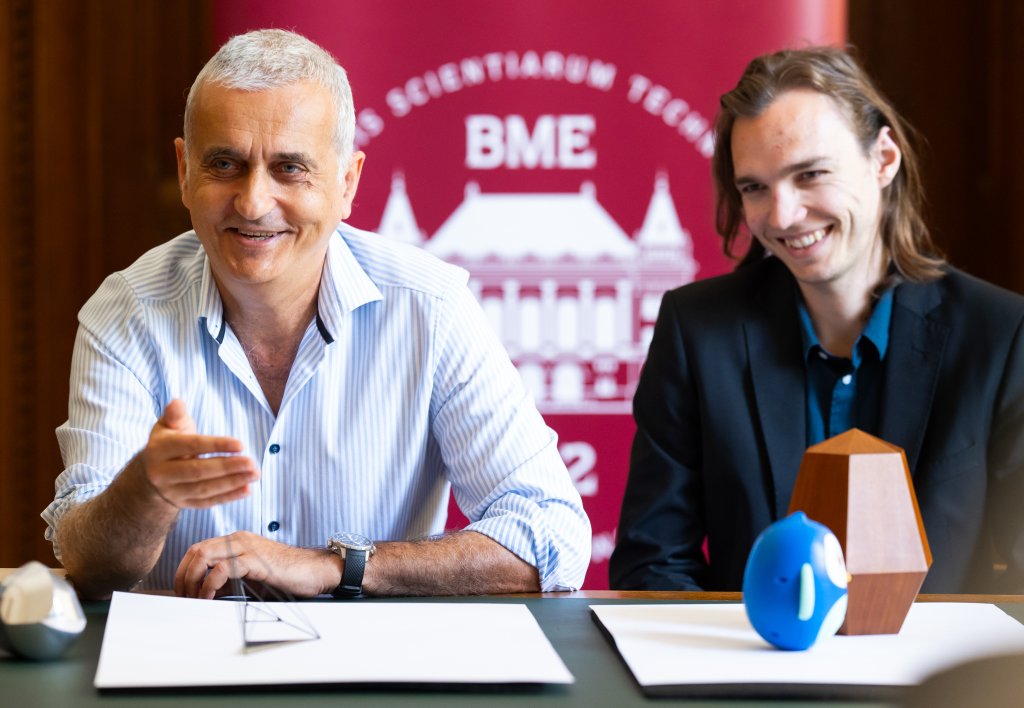News feed
BME Researchers Confirm a Forty-Year-Old Conjecture by Discovering a New Geometric Body
2025. 06. 30.
Dubbed Bille, the monostable tetrahedron always tips back onto the same face, regardless of its initial position. Its design principles could even inspire innovations in space shuttle engineering.
“Everyone thought it was impossible—after all, if it could exist, it would already exist,” remarked Professor Gábor Domokos, research professor at BME’s Department of Morphology and Geometric Modelling, when he first presented the world’s first four-faced ‘roly-poly’ object—a monostable tetrahedron that returns to the same face from any position. Owing to its unique tipping property, the researchers gave it the nickname Bille (a wordplay on the Hungarian word “billen”, meaning ‘to tip’).
Just as few believed in the Gömböc’s feasibility in 2007, even fewer would have wagered on the existence of the Bille—its creation demanded both mathematical and engineering ingenuity. Of course, the Bille differs from the Gömböc in several respects. Most notably, it is not homogeneous: it carries significant weight along one of its faces. Yet, despite its angular shape, it reliably tips back to the same face on a horizontal surface, just as its name suggests.
Who would think of such a thing?
Previously, most mathematicians believed it impossible to create a monostable object bounded by so few faces. John Horton Conway, the eminent British mathematician who passed away in 2020, was among the few who disagreed. He first shared his hypothesis with colleagues in 1984. “It is astonishing that Conway even conceived of its existence. His intuition opened many doors in mathematics and computer science,” noted Domokos.

It took over forty years for his conjecture to be confirmed, thanks to the joint efforts of Gábor Domokos, university professor at BME, and Gergő Almádi, a final-year student at the Faculty of Architecture. Together with Robert Dawson—Conway’s student and Professor at St Mary’s University in Halifax—they began work on the problem three years ago. Using computer modelling, they developed the theoretical framework, then proceeded to design and manufacture the physical prototype.
Gergő Almádi plans to enrol at the Csonka Pál Doctoral School at BME this September, but on Tuesday he still had to defend his master thesis on the subject. The following day, the Bille was unveiled at a press briefing. The carbon tube frame weighs just 2 grams, yet on one side it carries a 118-gram weight made from a high-density tungsten carbide alloy, ensuring it always tips back to the same face. (In theory, other material combinations such as titanium and platinum could also work, but this would require a significantly larger model needing half a kilogram of platinum—hardly an economical option.)
The fewer faces a body has, the more difficult it is to create a shape that returns to the same face from any position.
The tetrahedron thus represents the ultimate challenge in the realm of potential monostable objects, as it is bounded by the fewest possible faces.
“There is no harder problem in this field: if this can be achieved, then, following our principles, it is possible to design similar objects from polyhedra with any number of faces,” Domokos explained. He described the Bille as opening up an entirely new avenue for construction, inviting engineers to build on this discovery—for instance, by developing versions that remain stable even on inclines.

Gábor Domokos and Gergő Almádi
As an example, he noted that when the Gömböc was first created, many wondered about its practical applications; fifteen years later, the answer arrived when researchers at MIT, Harvard, and pharmaceutical company Novo Nordisk developed an insulin capsule based on the Gömböc’s design principles. “Innovations follow a natural trajectory—economic benefits are never immediate,” the professor added.
The significance of the Bille lies in demonstrating that the BME researchers’ approach and its underlying methods can prevent tipping in a wide range of spatial forms using purely geometric means. This could prove invaluable in fields such as spacecraft lander design. “Bille is the solution to a geometric challenge, and as such could help develop self-righting structures—including space shuttles—in the future,” Domokos said.
Indeed, one of aerospace engineers’ worst nightmares is that a meticulously planned mission could fail—or at least become vastly more complicated—due to something as mundane as tipping over.
“There are currently three devices on the Moon lying idle on their sides,”
Domokos pointed out. Using models, he demonstrated how the geometry of the Bille could inform the design of landing units.

An article about the discovery was published on 25 June in Quanta Magazine, one of the world’s leading popular science journals focusing on physics, mathematics, and computer science. The preprint version of the paper (Building a Monostable Tetrahedron by Gergő Almádi, Robert J. Macg. Dawson, and Gábor Domokos) is available online. “A mathematical proof can be disproven, but this cannot—because its model works in reality,” Domokos remarked.
gp
